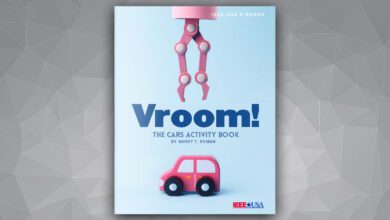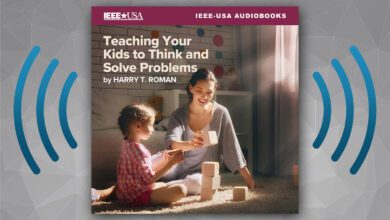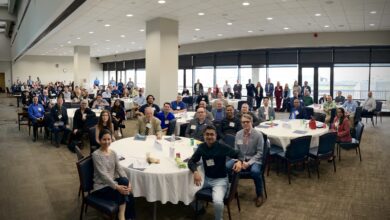
Critical issues are facing IEEE-USA—but where do the two candidates running for 2019 IEEE-USA President-Elect stand on how best to resolve them? We asked James M. Conrad and Maura K. Moran a series of questions; their responses should be helpful when you decide how you will vote, after you receive your IEEE election ballot in August.
Tell us about yourself and your vision for IEEE-USA.
Jim Conrad: In my career, I have spent an equal amount of time working in industry and academia. I am currently a professor at the University of North Carolina at Charlotte. I have been serving IEEE as a volunteer in positions where I was given more responsibility, most recently as a member of the IEEE Board of Directors, as Region 3 Director. While I am not necessarily a maverick, I did build a reputation of not blindly voting on activities, just because “that is the way we have always done it.”
I led Region 3 to concentrate on member engagement and service to the community. In 2016, Region 3 was the U.S. leader in membership retention. I would like to continue these activities on a USA-wide platform, while continuing IEEE-USA’s involvement in government relations. IEEE-USA needs to ensure our members’ skills and knowledge to stay relevant in this rapidly changing technology landscape.
Maura Moran: I am a patent lawyer in software, robotics, and AI, helping to protect and commercialize hard-earned work product. I received a B.S. in Mathematics from University of Dayton, a J.D. from Boston University School of Law, and studied at Northeastern University (BSEE/MSEE coursework).
I am the past IEEE-USA VP, Government Relations. I served on its Strategic Prioritization Ad Hoc, where we took a hard look at IEEE-USA’s options, given its declining membership. I currently chair TAB’s Contracts Review Ad Hoc, assessing IEEE’s approval process and developing solutions to roadblocks experienced by events and publications organizers. I co-chair IEEE Boston WIE; I am active with IEEE Boston RAS; and I am a member of HKN, SSIT, RAS, Computer, and Computational Intelligence Societies.
I am committed to making IEEE-USA indispensable to our members, professions, employers/clients, government and IEEE. Together, we can fit membership to today’s members, focus on students and young professionals, and increase awareness and impact of IEEE-USA.
What are your strongest personal traits from which your leadership of IEEE-USA stands to benefit?
Jim: In my career, I have worked in large organizations (IBM, Ericsson) and small startup organizations. I have worked in industry and academia. I have been a technical contributor (engineer, programmer) and a leader (project manager, manager). I have served at many of the leadership levels within IEEE (conference chair, section chair, region director). I have stayed up-to-date on technological advances with the help of IEEE programs. I have had to find a new job when I was laid off. What I bring to IEEE-USA is that I have a broad range of experiences that fully reflect the demographics of our U.S. membership. My traits of technical and leadership experience give me good insight into what benefits/programs IEEE’s U.S. members want and need, and ensure IEEE-USA offers them.
Maura: I have negotiated deals and developed/implemented strategies my entire career, so I work well in a team. I know how to listen (key to persuasion), how to develop consensus (key to effective teamwork), and how to establish credibility and trust others’ expertise (both of which are key to cross-disciplinary collaboration). I know how to be persistent without being stubborn, and that follow-up is critical to every project. As an IEEE volunteer, I employ legal/business skills in advocacy and developing consensus. I learn from my surroundings. Through my clients (individuals, companies, universities), and running my own business, I know the pressures that entities of all sizes face in stiff competition, and appreciate the power of marketing, a positive image, and staying focused and targeted during challenging times.
What is your favorite aspect of your IEEE-USA involvement?
Jim: In my attendance at IEEE-USA meetings and conferences, what stands out is the volunteers’ drive to help their fellow engineers be successful in their jobs. I am proud to see how so many people have worked hard to make professional development, employment networking, and leadership training activities available for our members. So my favorite aspect of all of that, is that I was able to help organize many of these activities.
Maura: IEEE and IEEE-USA have given me opportunities to:
- Stay current in my fields and engage in meaningful debate on cutting issues
- Broaden my focus beyond what is usually seen in my job
- Educate and voice our positions to courts, legislators and government officials on issues important to me, U.S. IEEE members, and my clients
- Work with other members and associations with a common goal of positive change
- Meet colleagues, make friends—and have fun!
What is IEEE-USA’s most critical challenge? If you’re elected, what will you do about it?
Jim: By far our most critical challenge is the fiscal viability of IEEE-USA itself. The member dues (which makes up 95% of IEEE-USA’s revenue) are not keeping pace with the costs of service, and as a result we are really at a juncture. We need to create new revenue sources. One idea I have advocated is profitable, cross-disciplinary conferences that serve as a way to spur dialog between academic and industry professionals. I envision these conferences to have tutorials, exhibits, project presentations, and lots of networking opportunities. One example topic is robotics—it cuts across software, electrical and mechanical engineering boundaries.
Maura: Declining membership. Most of IEEE-USA’s revenue comes from member dues, so IEEE-USA is operating in a resource constrained environment. Like any family or business in such circumstances, IEEE-USA needs to:
- Focus on bringing in resources and members, and
- Target spending on only what provides most benefit to its core missions.
I applaud IEEE-USA’s commitment to living within its means, and concentrating on its core missions (public policy and member careers). We should also focus on increasing new membership and member retention, fitting membership to today’s members, supporting students and young professionals, and increasing awareness and impact of IEEE-USA.
How should IEEE-USA address the issue of declining membership?
Jim: I have always been a vocal advocate for technical development and project opportunities at the Section level. For example, a Section could build a laser tag system for a local Boys Club/Girls Club, or mentor a FIRST Robotics team. We must ensure that members find involvement in these “extracurricular activities” technically challenging, meaningful, and fun!
Maura: We should recraft IEEE-USA Value-Added, so being a member is a no-brainer. IEEE-USA should adjust itself to sustain the technology professionals that we are to-day—not just the IEEE member of 40 years ago—no matter how we work, what kind of career we have, and how long we have been in our careers.
Is there a need to better understand the Millennial Generation, and to meet their needs better? If so, what are some of the changes IEEE and/or IEEE-USA need to make to address this changing demographic?
Jim: Despite what many have said and written, many traits attributed to the Millennial Generation are also applicable to other generations. Paramount is IEEE-USA’s ability to provide what members need to be successful, including: a technical social network, a mentoring program, technical information, and leadership opportunities (where one can learn—and perhaps fail—safely). Membership needs to be deemed as relevant, but also necessary.
Maura: Absolutely—they are the future. Above all, IEEE and IEEE-USA must listen and adjust to help them:
- For challenges similar to those more senior members face, we should mentor.
- For unique challenges, we should adapt member benefits—and our technical, humanitarian, and policy initiatives to support and include them. Their cross-disciplinary approaches will improve outcomes; networking may uncover their next opportunity.
They are especially needed in policy committees; from fresh eyes come fresh ideas.
How can IEEE-USA improve employment opportunities for members and other U.S. technical professionals?
Jim: The key is to have meaningful dialogues with industry leaders on what they want tomorrow’s employees to contribute in the workplace. Then, IEEE needs to work in partnership with industry to help train/retrain our members to best respond to these workplace needs.
Maura: IEEE-USA can prepare its members for increasingly relevant careers by training in multidisciplinary thinking and collaboration, and applying such to its technical, humanitarian and policy initiatives. Then, we need to increase member involvement, because each such structured initiative has the potential to widen knowledge, deepen skills, and be career enhancing.
If elected, what do you hope to accomplish?
Jim: We must find new and large revenue streams for IEEE-USA beyond member dues, to continue our programs of government relations/advocacy and professional development. If we find other opportunities to increase revenue, we could reinstate some of our popular programs, like PACE funding for Regions and Sections. I would like to have a large number of members across the United State fully involved in the leadership of all of the ideas I suggested earlier.
Maura: I want IEEE-USA to apply multidisciplinary thinking in all of its operations, planning and initiatives. I want to collaborate across IEEE-USA, across IEEE, and outside of IEEE on technical, humanitarian, policy and STEM initiatives.
I want to increase member involvement in policy committees to:
- Make committees more accessible
- Increase communication to members
- Update the alert system to create emails for members to send to legislators
- And improve cross-committee collaboration, to simplify addressing cross- disciplinary areas
If IEEE-USA were an airline, how would you describe its characteristics?
Jim: IEEE-USA is truly a budget airline. While the “passenger cost” is low, its service offerings are much higher than the cost members pay for the basic service. I hope to lead “Air IEEE-USA” to improve our fiscal standing, so we can offer leather seats and full meal service!
Maura: IEEE-USA Airlines has very little legroom for its students and young professionals. We have more than a simple curtain between Coach and First Class; we have a significant disconnect across our membership classes.
Helen Horwitz is an award-winning freelance writer who lives in Albuquerque, N.M. She was with IEEE from 1991 through 2011, the first nine as Staff Director, IEEE Corporate Communications.






